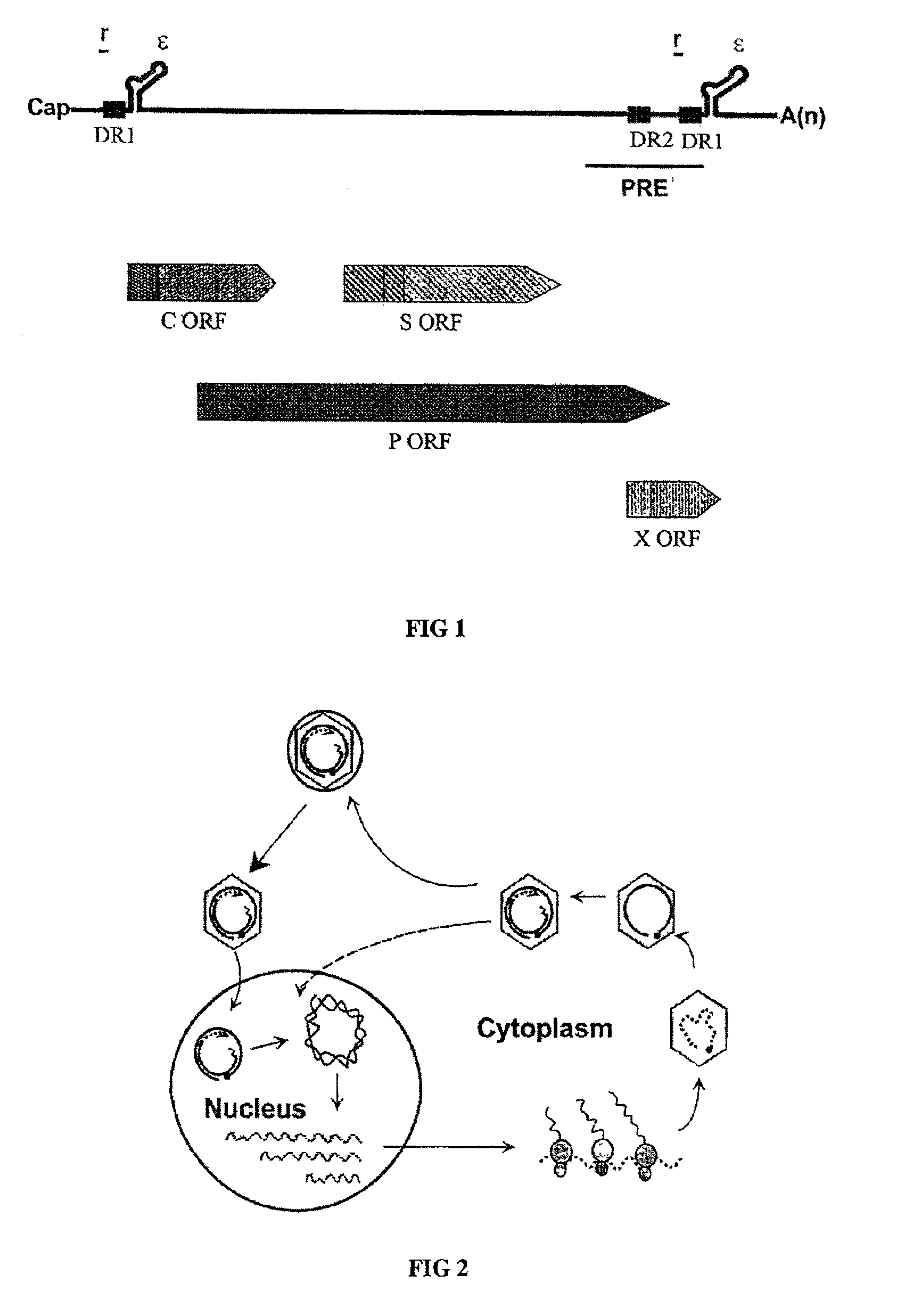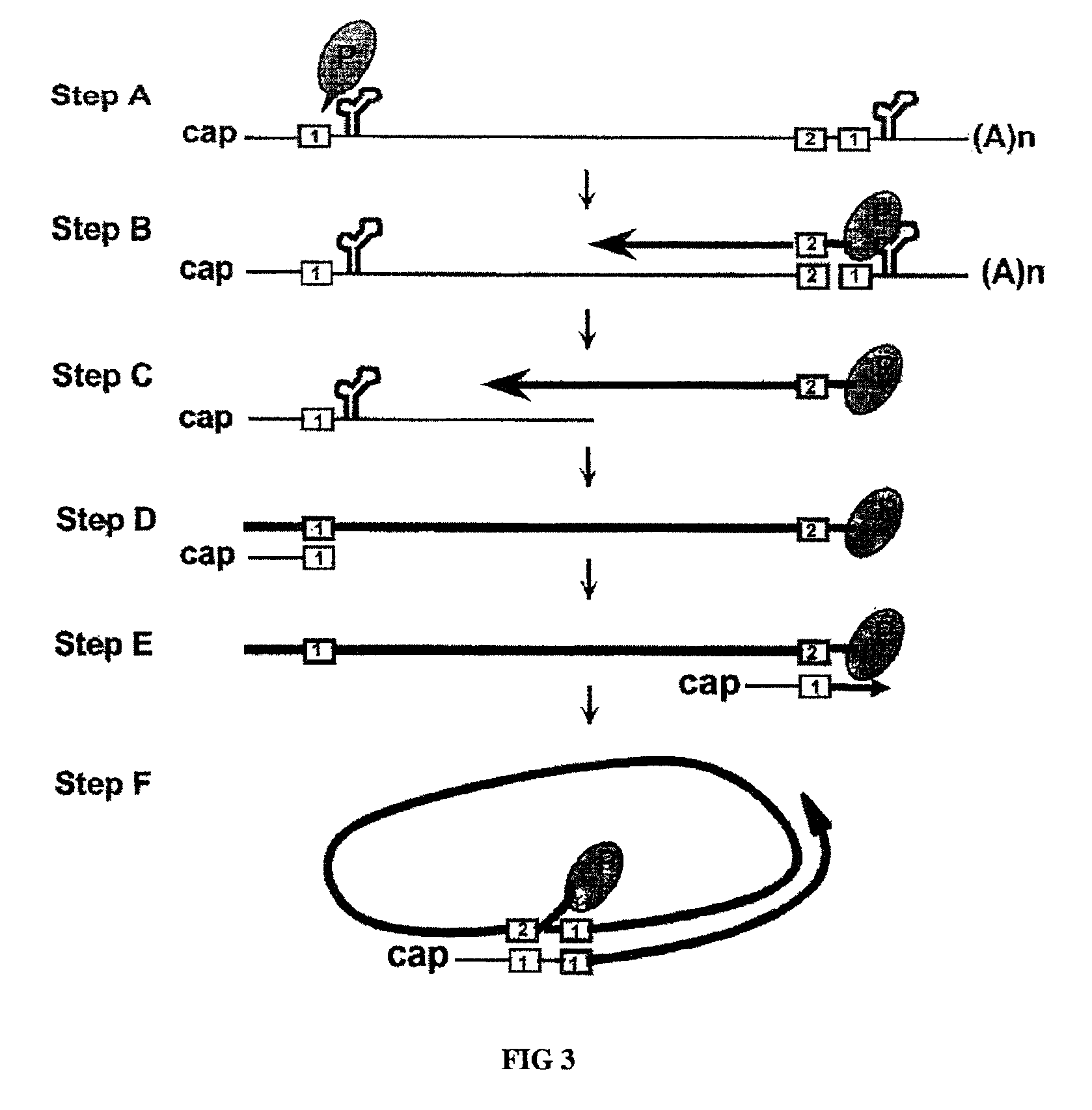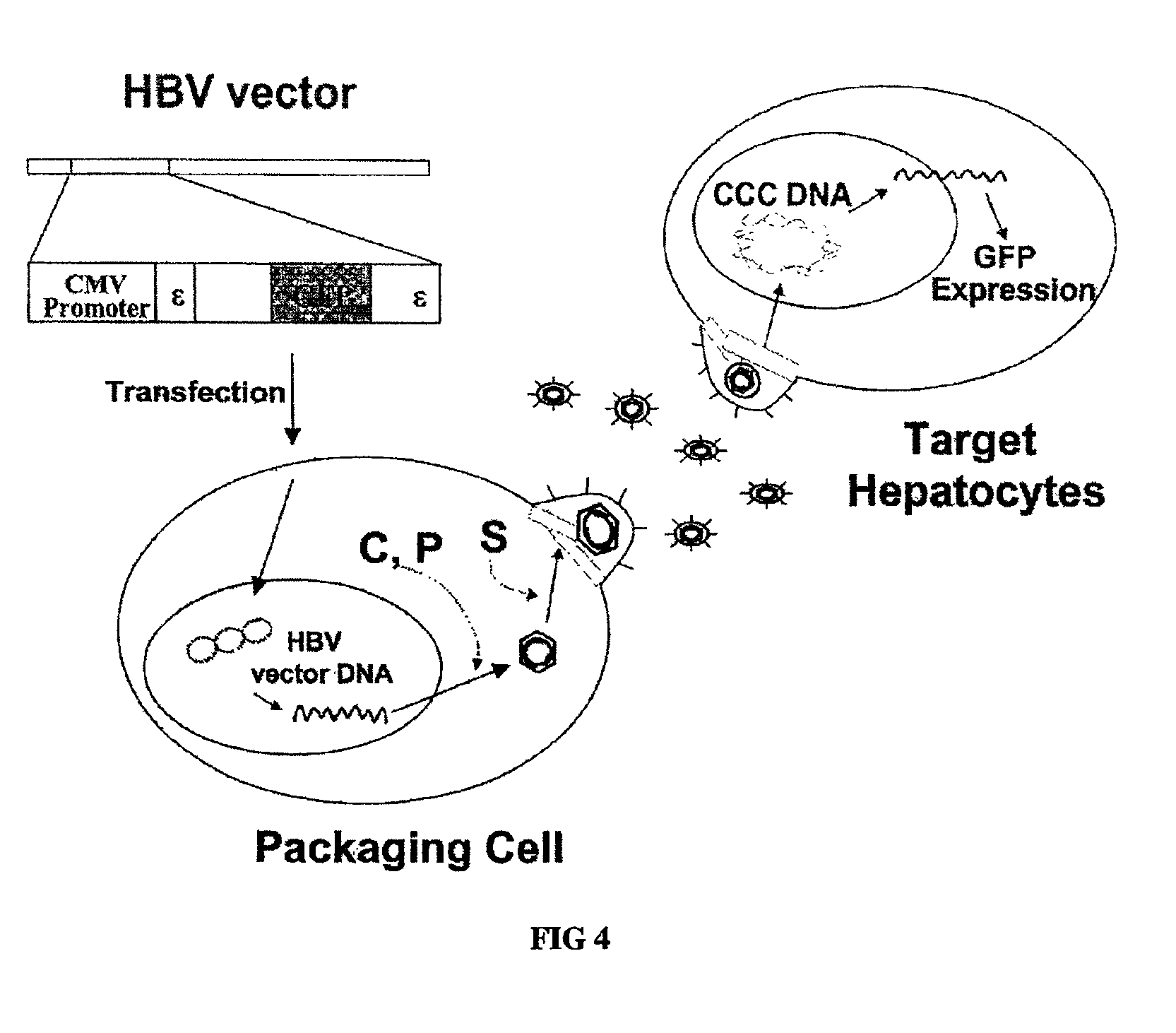Hepatitis B virus vectors for gene therapy
a technology of hepatitis b and vectors, applied in the direction of viruses/bacteriophages, genetic material ingredients, medical ingredients of bacteria, etc., can solve the problems of lack of tissue specificity, lack of long-term stable expression, and the possibility of insertional mutagenesis
- Summary
- Abstract
- Description
- Claims
- Application Information
AI Technical Summary
Benefits of technology
Problems solved by technology
Method used
Image
Examples
example 1
[0054]Construction of a Replication-competent Plasmid for Wild-type HBV
[0055]To design a HBV gene therapy vector, it is prerequisite to map all the cis-acting elements that are essential for the viral genome replication. To achieve this, a replication-competent plasmid that can lead to the production of infectious HBV particles upon transfection was constructed. The fact that a heterologous promoter driven RNA transcript analogous to the pregenomic RNA can lead to the production of infectious viral particles are well understood in the art (Nassal et al., 1990). Thus, a pregenomic RNA expression plasmid was designed such that the 5′-end of the transcripts would be identical to that of wild-type HBV. Specifically, the position of 5′-epsilon element is 30 nucleotides away from the 5′-end (Jeong et al., 2000).
[0056]The nucleotide sequence of the HBV genome was numbered starting at the unique Eco RI site of HBV ayw subtype, according to the method of Galibert et al. (Galibert et al., 197...
example 2
[0072]Demonstration of replication-competency of wild-type pregenomic RNA expression plasmid, R015 plasmid (pCMV-HBV / 30).
[0073]2-1. Cell Growth, Transfection of Heptoma Cell Lines
[0074]Human hepatoma cells, designated Huh7 cells were grown in DMEM (Gibco-BRL) supplemented with 10% fetal bovine serum (Gibco-BRL) and 10 □ of gentamicin per mL and were split every third day. The day before transfection, cells were plated at a confluency of 75%. On the following day, cells were washed twice with phosphate-buffered saline (PBS) and given fresh media. After 2 hours, cells were transfected with 10 □ of supercoiled plasmid DNA per 60 mm plate by the CaPO4 coprecipitation technique.
[0075]2-2. Southern Blot Analysis of the Viral Replication-intermediate from Cytoplasmic Core Particles.
[0076]Three days after transfection, viral DNAs were extracted from intracellular core particles by PEG precipitation as described previously (Staprans et al., 1991). Briefly, transfected cells from a 100-mm pla...
example 3
[0078]Deletion mutants of R015 plasmid (pCMV-HBV / 30).
[0079]A series of small deletion mutants were generated by standard recombinant DNA technology (Sambrook et al., 2001).
[0080]3-1. R060(pCMV-ayw Δ1910-1992) Plasmid
[0081]Plasmid R059(pBS+Δ1910-1992) was made in which the Sac I-to-EcoR I(nt. 3182) fragment of HBV ayw subtype, but lacking the nt. 1910-1992 fragment (Galibert et al., 1979) was subcloned into pBluescript SK(+) plasmid (Stratagene, USA). Subsequently, the Sac I-to-EcoR I fragment of R015 was replaced by the Sac I-to-EcoR I fragment of R059 to generate R060 plasmid.
[0082]3-2. R048(pCMV-ayw Δ1884-2459) Plasmid
[0083]First, plasmid R046 was made in which the Sac I-to-EcoR I(nt. 3182) fragment of HBV ayw subtype (Galibert et al., 1979) was subcloned into pCH110 (Pharmacia). Then, R047 plasmid was generated by deleting the 151 bp Xba I fragment (nt. 1992-2143). Subsequently, the Sac I-to-EcoR I fragment of R015 plasmid was replaced by the Sac I-to-EcoR I fragment of R047 to g...
PUM
| Property | Measurement | Unit |
|---|---|---|
| Temperature | aaaaa | aaaaa |
| Temperature | aaaaa | aaaaa |
| Temperature | aaaaa | aaaaa |
Abstract
Description
Claims
Application Information
 Login to View More
Login to View More - R&D
- Intellectual Property
- Life Sciences
- Materials
- Tech Scout
- Unparalleled Data Quality
- Higher Quality Content
- 60% Fewer Hallucinations
Browse by: Latest US Patents, China's latest patents, Technical Efficacy Thesaurus, Application Domain, Technology Topic, Popular Technical Reports.
© 2025 PatSnap. All rights reserved.Legal|Privacy policy|Modern Slavery Act Transparency Statement|Sitemap|About US| Contact US: help@patsnap.com



